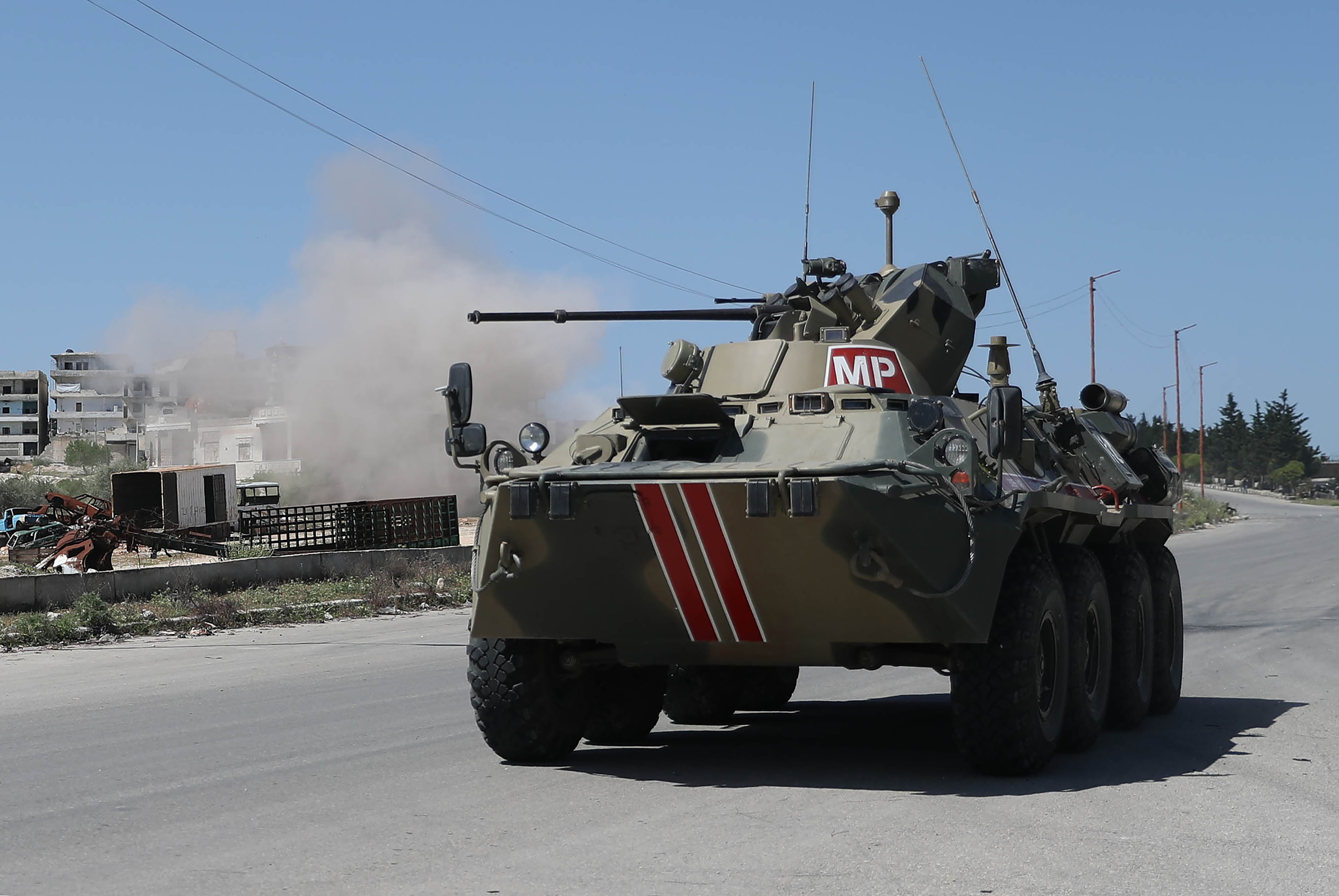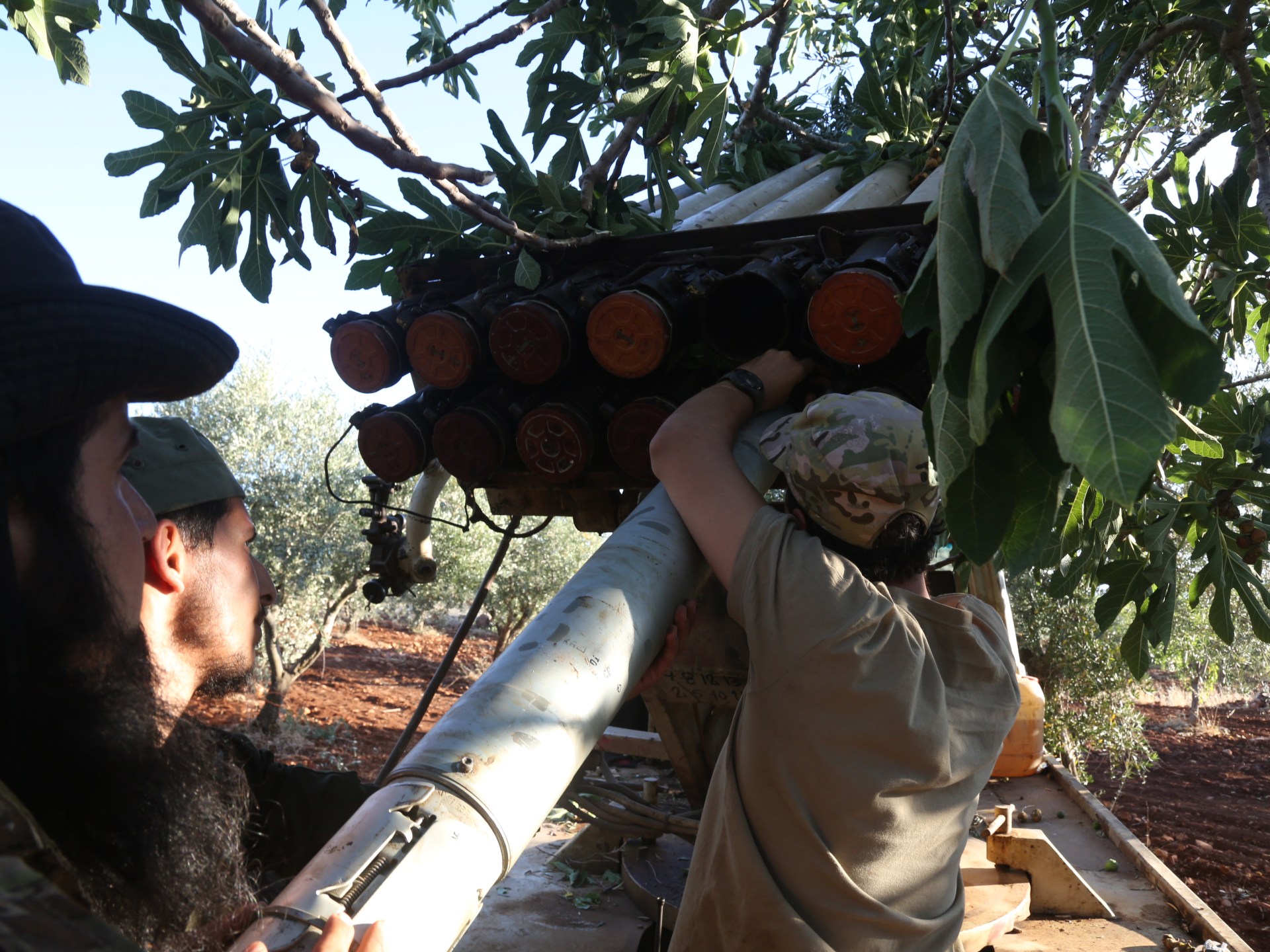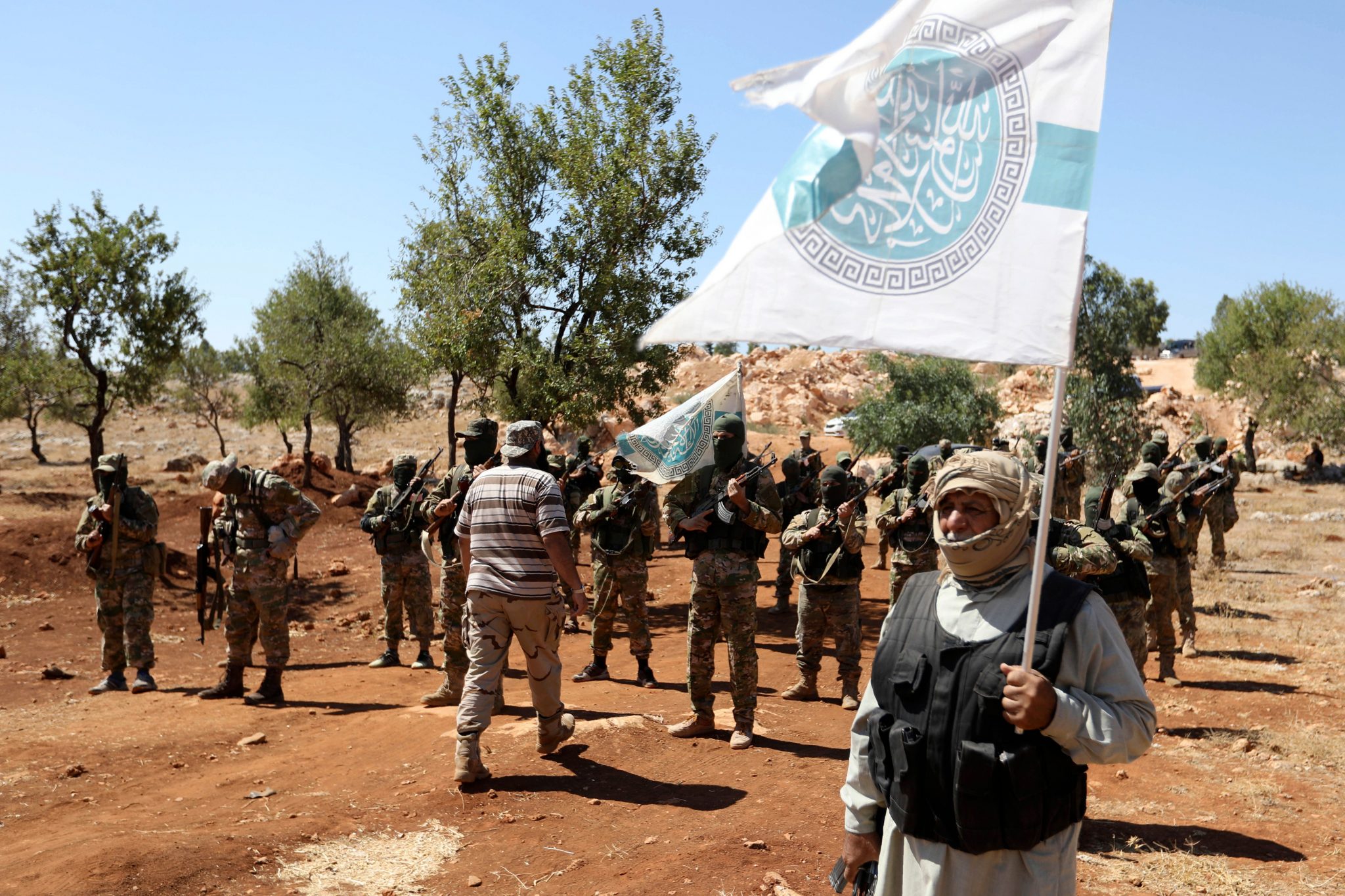Best News | This years Best News Treats and Viral Events
Hayat Tahrir Al-Sham: A Comprehensive Overview Of The Syrian Rebel Group
After carefully analyzing, digging information, made Hayat Tahrir Al-Sham: A Comprehensive Overview Of The Syrian Rebel Group we put together this Hayat Tahrir Al-Sham: A Comprehensive Overview Of The Syrian Rebel Group guide to help audiences make the right decision.
FAQ
This Frequently Asked Questions (FAQ) section is written to clarify essential aspects of Hayat Tahrir Al-Sham and its role in the Syrian civil war. This overview offers a comprehensive understanding of the group's origins, goals, and strategies.

Militant group Hayat Tahrir al-Sham assaults at least 12 Syrian - Source cpj.org
Question 1: What is the origin of Hayat Tahrir Al-Sham?
Hayat Tahrir Al-Sham emerged in 2017 as a merger of several jihadist groups, including Jabhat Fatah al-Sham (formerly known as Jabhat al-Nusra). The group's primary objective is to establish an Islamic state in Syria.
Question 2: What is Hayat Tahrir Al-Sham's territorial control?
Currently, Hayat Tahrir Al-Sham controls a small area in northwestern Syria, primarily in the province of Idlib. The group has lost significant territory since its peak in 2015 due to military campaigns by the Syrian government, Russia, and Turkey.
Question 3: How is Hayat Tahrir Al-Sham different from other rebel groups?
Unlike most other rebel groups, Hayat Tahrir Al-Sham adheres to a strict interpretation of Islamic law and seeks to implement it throughout the areas it controls. The group has been designated as a terrorist organization by the United Nations and several Western countries.
Question 4: What is the relationship between Hayat Tahrir Al-Sham and other terrorist groups?
Hayat Tahrir Al-Sham has had close ties to Al-Qaeda in the past, but the group has recently distanced itself from the global terrorist network. However, some analysts believe that Hayat Tahrir Al-Sham maintains links with other extremist factions.
Question 5: How has Hayat Tahrir Al-Sham been involved in the Syrian civil war?
Hayat Tahrir Al-Sham has played a significant role in the Syrian civil war. The group has fought against both the Syrian government and rival rebel factions. It has also been accused of committing human rights abuses against civilians.
Question 6: What is the future of Hayat Tahrir Al-Sham?
The future of Hayat Tahrir Al-Sham is uncertain. The group faces significant challenges, including military pressure from the Syrian government and its allies, as well as political isolation from the international community. However, the group remains a potent force in the Syrian conflict and continues to pose a security threat.
For further information and a comprehensive overview of Hayat Tahrir Al-Sham, please refer to Hayat Tahrir Al-Sham: A Comprehensive Overview Of The Syrian Rebel Group.
Tips
Hayat Tahrir Al-Sham (HTS), an influential rebel group in Syria, continues to play a significant role in the ongoing conflict. Understanding its objectives, strategies, and key figures can provide valuable insights into the complex dynamics of the Syrian crisis.
Tip 1: Closely follow political developments within Syria and the region to gauge potential shifts in alliances and international support for HTS.
Tip 2: Assess HTS's military strength, including its troop numbers, weapons arsenal, and training programs. This helps predict potential military actions and territorial gains.
Tip 3: Study HTS's ideological underpinnings, particularly its Salafist-jihadist beliefs. This provides insights into its political goals, alliances, and potential for radicalization.
Tip 4: Monitor HTS's relationships with other rebel groups, local communities, and external actors. These interactions shape its influence and strategic decision-making.
Tip 5: Analyze HTS's operational structure, command hierarchy, and decision-making processes. Understanding its internal dynamics aids in predicting its response to external pressures.
By following these tips, analysts can gain a more comprehensive understanding of HTS and its impact on the ongoing Syrian conflict.
In conclusion, Hayat Tahrir Al-Sham remains a central actor in Syria's multifaceted crisis. Continued monitoring and analysis are essential for informed decision-making and policy formulation in the region.
Hayat Tahrir Al-Sham: A Comprehensive Overview Of The Syrian Rebel Group
Understanding Hayat Tahrir Al-Sham's origins, leadership, ideology, military capabilities, challenges, and global impact is crucial for comprehending the Syrian conflict and its regional implications.
- Formation: Merger of several Salafi-jihadist groups in 2017.
- Leadership: Led by Abu Mohammad al-Joulani, a prominent rebel commander.
- Ideology: Adheres to an extreme interpretation of Sunni Islam.
- Military: Controls significant territory in northwestern Syria.
- Challenges: Faces internal divisions, airstrikes, and international sanctions.
- Global Impact: Designated as a terrorist organization by the UN and several countries.
Hayat Tahrir Al-Sham's evolution from a hardline rebel group to a relatively stable but internationally isolated entity highlights the complex dynamics of the Syrian conflict. Its military prowess, ideological rigidity, and geopolitical connections continue to shape regional power balances and the ongoing search for peace in Syria.

Siria - Hayat Tahrir al-Sham (HTS) cerca un collegamento più stretto - Source www.vietatoparlare.it

Royal Intel 👑 on Twitter: "Live visual of current air raids over idlib - Source twitter.com
Through our analysis and research, we have put together this guide to help readers understand the history, ideology, and current activities of Hayat Tahrir Al-Sham.
| Feature | Hayat Tahrir Al-Sham |
| ----------- | ----------- |
| Founded | 2017 |
| Ideology | Salafi-jihadist |
| Goal | To establish an Islamic state in Syria |
| Current status | Controls Idlib Governorate in northwestern Syria |
- |
- History of Hayat Tahrir Al-Sham
- Ideology of Hayat Tahrir Al-Sham
- Current activities of Hayat Tahrir Al-Sham
- Future prospects of Hayat Tahrir Al-Sham
- Conclusion

The Age of Political Jihadism: A Study of Hayat Tahrir al-Sham | The - Source www.washingtoninstitute.org
FAQ
This section presents frequently asked questions (FAQs) and comprehensive answers about Hayat Tahrir Al-Sham. The information provided aims to clarify common concerns and correct misconceptions surrounding the Syrian rebel group. Hayat Tahrir Al-Sham: A Comprehensive Overview Of The Syrian Rebel Group
Question 1: What is the history and evolution of Hayat Tahrir Al-Sham?
Hayat Tahrir Al-Sham (HTS) emerged in 2017 through a merger of several prominent rebel groups, including Jabhat Fateh al-Sham (formerly known as Jabhat al-Nusra).

Is National Army Merging with Hay’at Tahrir al-Sham? - The Syrian Observer - Source syrianobserver.com
Question 2: What are the ideological and political positions of HTS?
HTS adheres to a strict interpretation of Sunni Islam and seeks to establish an Islamic government in Syria. It has been designated as a terrorist organization by multiple countries, including the United States and Russia.
Question 3: What is HTS's relationship with other rebel groups in Syria?
HTS has a complex relationship with other rebel groups. While it has cooperated with some groups on certain issues, it has also clashed with others, including the Free Syrian Army.
Question 4: What is HTS's role in the ongoing Syrian conflict?
HTS controls significant territory in northwestern Syria and is engaged in ongoing fighting with government forces and other rebel groups. It has also been accused of human rights abuses, including arbitrary detentions and torture.
Question 5: What is the international community's response to HTS?
The international community has expressed concern about HTS's activities and its potential role as a haven for terrorists. However, there is no consensus on how to deal with the group.
Question 6: What is the future of HTS?
The future of HTS remains uncertain. The group faces challenges from both the Syrian government and other rebel groups. It is also under international pressure to disarm and disband.
The answers provided in this FAQ section offer a comprehensive understanding of Hayat Tahrir Al-Sham, its ideology, activities, and the international response to the group.
To further explore the topic, refer to the comprehensive overview article on Hayat Tahrir Al-Sham
Tips
To better understand Hayat Tahrir Al-Sham, its origins, motivations, and impact on the Syrian conflict, it is essential to examine various aspects of the group.
Tip 1: Historical Context and Formation
Understanding the historical background and circumstances surrounding the formation of Hayat Tahrir Al-Sham is crucial. This includes analyzing the evolution of the Syrian opposition, the rise of extremist groups, and the factors contributing to the merger of various factions into Hayat Tahrir Al-Sham.
Tip 2: Ideological Framework and Goals
Examining the ideological underpinnings and goals of Hayat Tahrir Al-Sham is essential. Understanding their interpretation of Salafi-jihadism, their vision for an Islamic state, and their strategies for achieving their objectives provides insights into the group's motivations and aspirations.
Tip 3: Organizational Structure and Hierarchy
Analyzing the organizational structure and hierarchy of Hayat Tahrir Al-Sham is important. This includes identifying key leaders, understanding their roles and responsibilities, and examining the group's decision-making processes. Such analysis sheds light on the internal dynamics and power structures within the organization.
Tip 4: Military Capabilities and Tactics
Assessing the military capabilities and tactics employed by Hayat Tahrir Al-Sham is crucial. This includes examining their military equipment, training, and combat strategies. Understanding their strengths and weaknesses in warfare provides insights into their ability to wage battle and maintain control of territory.
Tip 5: Political and Diplomatic Engagements
Analyzing Hayat Tahrir Al-Sham's involvement in political and diplomatic spheres is important. This includes understanding their attempts to seek recognition, establish relationships with other actors, and participate in negotiations or peace talks. Such analysis highlights the group's efforts to influence the political landscape.
These tips provide a comprehensive framework for gaining a deeper understanding of Hayat Tahrir Al-Sham and its impact on the Syrian conflict.
In conclusion, Hayat Tahrir Al-Sham remains a significant actor within the Syrian conflict. Understanding its origins, motivations, and impact is essential for developing effective strategies to address the challenges posed by the group.
Hayat Tahrir Al-Sham: A Comprehensive Overview Of The Syrian Rebel Group
Understanding Hayat Tahrir Al-Sham (HTS), a prominent Syrian rebel group, necessitates examining crucial aspects encompassing its genesis, objectives, ideological underpinnings, operational capabilities, external influences, and long-term implications.
- Formation and Evolution: Originating from Jabhat al-Nusra, HTS has evolved through mergers and alliances.
- Ideology and Goals: Adhering to Salafi-jihadist ideology, HTS's primary objective is the establishment of an Islamic emirate in Syria.
- Operational Capabilities: HTS possesses a significant military force, employing guerrilla tactics and controlling territory in northwestern Syria.
- Foreign Support: Receiving financial and logistical assistance from various actors, including Turkey and Qatar, HTS has been able to sustain its operations.
- International Concerns: Designated as a terrorist organization by the United States and others, HTS's alleged links to al-Qaeda raise concerns about its potential as a threat to regional and global security.
- Future Implications: The ongoing conflict in Syria and the shifting geopolitical landscape present uncertainties regarding HTS's future role and influence.
In conclusion, Hayat Tahrir Al-Sham represents a complex and evolving force within the Syrian conflict. Its formation, ideology, operational capabilities, external support, international concerns, and potential future implications underscore the need for a comprehensive understanding of this influential rebel group and its broader implications for regional stability and global security.

Can Turkey Unseat Hayat Tahrir Al-Sham in Idlib? | Al Bawaba - Source www.albawaba.com

Syrian rebel group Hayat Tahrir al-Sham steps up anti-government - Source www.aljazeera.com
Hayat Tahrir Al-Sham: A Comprehensive Overview Of The Syrian Rebel Group
Hayat Tahrir Al-Sham (HTS) is a jihadist rebel group fighting in the Syrian Civil War. Formed in 2017 from a merger of several other rebel groups, HTS is one of the most powerful rebel groups in Syria, with an estimated strength of 10,000 fighters. HTS controls a large swath of territory in northwestern Syria, including the city of Idlib.

HTS militant killed in Syria’s Idlib - North press agency - Source npasyria.com
HTS is led by Abu Mohammad al-Julani, a former member of Al-Qaeda in Iraq. HTS has been designated a terrorist organization by the United States, the United Nations, and the European Union. HTS has been accused of committing human rights abuses, including summary executions, torture, and the use of child soldiers.
The Syrian Civil War is a complex and multifaceted conflict, with no easy solutions. HTS is one of the most powerful rebel groups in Syria, and its role in the conflict is likely to continue to be significant. HTS is a powerful rebel group with a long and complicated history. The group's role in the Syrian Civil War is likely to continue to be significant.
| Year | Event |
|---|---|
| 2011 | Syrian Civil War begins |
| 2012 | HTS is formed |
| 2014 | HTS seizes control of Idlib |
| 2017 | HTS is designated a terrorist organization by the United States |
| 2019 | HTS launches a major offensive against the Syrian government |
Conclusion
HTS is a powerful and well-organized rebel group that has played a major role in the Syrian Civil War. The group's control of Idlib and its continued presence in other parts of Syria pose a significant challenge to the Syrian government and its allies. HTS is likely to continue to be a major player in the Syrian conflict for the foreseeable future.
The Syrian Civil War is a complex and multifaceted conflict with no easy solutions. HTS is one of the most powerful rebel groups in Syria, and its role in the conflict is likely to continue to be significant. The group's control of Idlib and its continued presence in other parts of Syria pose a significant challenge to the Syrian government and its allies. HTS is likely to continue to be a major player in the Syrian conflict for the foreseeable future.